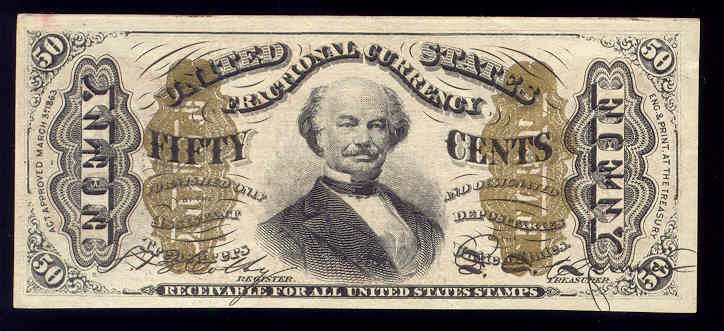 FR1325
FR1325GRADING GUIDELINES
Grading is a very subjective procedure. The following criteria should help you to make a determination of an ungraded note. Beware of processed notes. Always check a note under a bright light at a 45 degree angle to look for pressed out folds. Lay the note on a flat surface to see if it curls which indicates pressing. An unpressed note should have good embossing. Smell a note to see if it has been bleached or some other chemical was used. There are many people who try to enhance their notes in order to raise the grade to an unsuspecting person. The higher the grade, the greater it's value. Be familiar with the grading process so that you won't be taken to the cleaners.
I have tried to find examples for each of the grading categories.
 FR1325
FR1325Superb Gem (MS67-70) A virtual perfect note, with huge margins and perfect centering on both obverse and reverse. A note that says "WOW" and has no imperfections such as foxing, pinholes or any imperfections in paper quality. The value of a superb gem is 150-200 percent higher than a gem note.
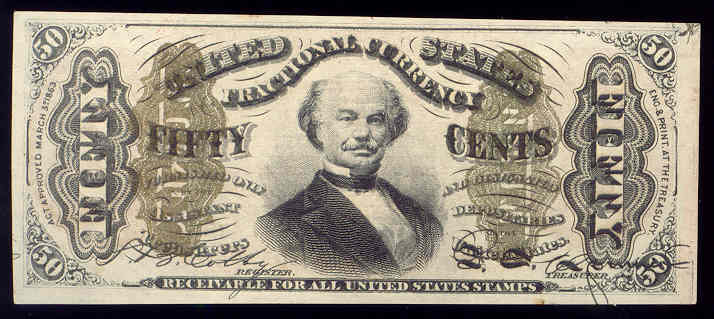 FR1324
FR1324Gem (MS65-66) An extremely nice note with broad and well centered margins, both obverse and reverse. A note in this category may have a slight imperfection that in no way distracts from the quality of the note. This note can not have discoloration nor pinholes. In this example, all magrins are wide but the upper margin dips slightly to the right.
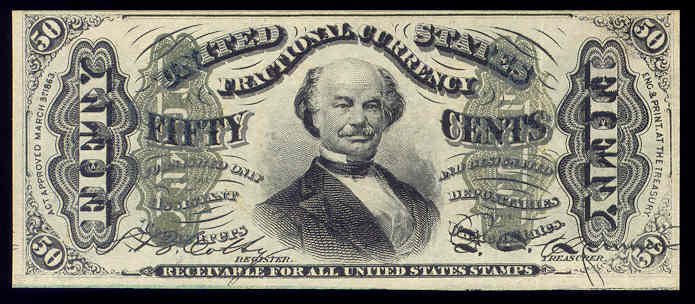 FR1335
FR1335Choice Uncirculated (MS63-64) A very nice note that has only ONE noticeable imperfection. A quality note with centering such as three nice and one narrow margin, some light age toning, or a gem quality note but with one slight pinhole are some examples for the choice category. The margin must not be cut into the design. The only exception are the Justice notes where the note may be choice even if one of the margins is somewhat into the design. In this example, the top margin is narrower than the other three margins.
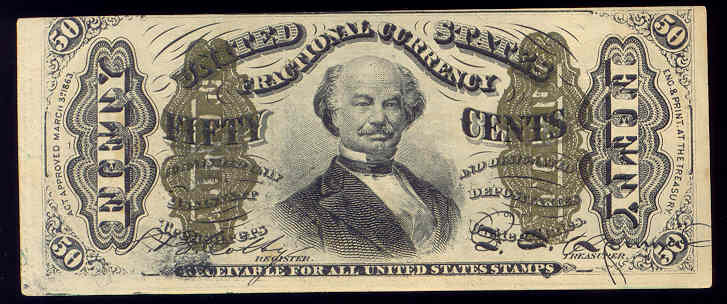 FR1333
FR1333Uncirculated (MS60-62) A note that does not show any signs of circulation. It may have several defects such as a corner fold that doesn't touch the design, pinholes, foxing, etc. In this example, the upper margin cuts slightly into the design.
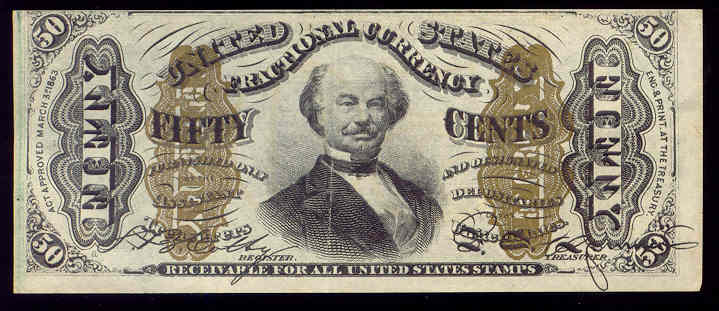 FR1336
FR1336Almost uncirculated (MS50-59) A note in this category may have a center fold or several corner folds but not both. The note may at first glace may seem uncirulated with crisp paper but upon closer view may show some handling. Notice that this note has a vertical fold in the center of the note.
Extra Fine (MS40-49) These notes may have two or three folds but retains much crispness. It may show signs of handling but has no dirt or grime.
Very Fine (MS20-39) The note will show signs of normal wear and will have four to six folds. Inking and printing should be clearly noticeable with no excessive wear and with some crispness remaining.
Fine (MS12-19) A well circulated note with many folds and creases. Edges will show much handling with some small chips or tears. Tears can not be into design of note. Colors will be subdued and not bright. Note will show some dirt and grime but not excessive.
Very Good (MS8-10) An abused and well worn note with small chips and tears into the design of the note. Staining and discoloration may be evident. Small hole in center of note may be present due to excessive folding. The note will have an overall unattractive appearance. A note of this type is not very collectable except in excessively rare notes.
Good (MS6) Note is unattractive with excessive wear and folds. Notes can have large tears but no large pieces can be missing. This type of note is a filler.